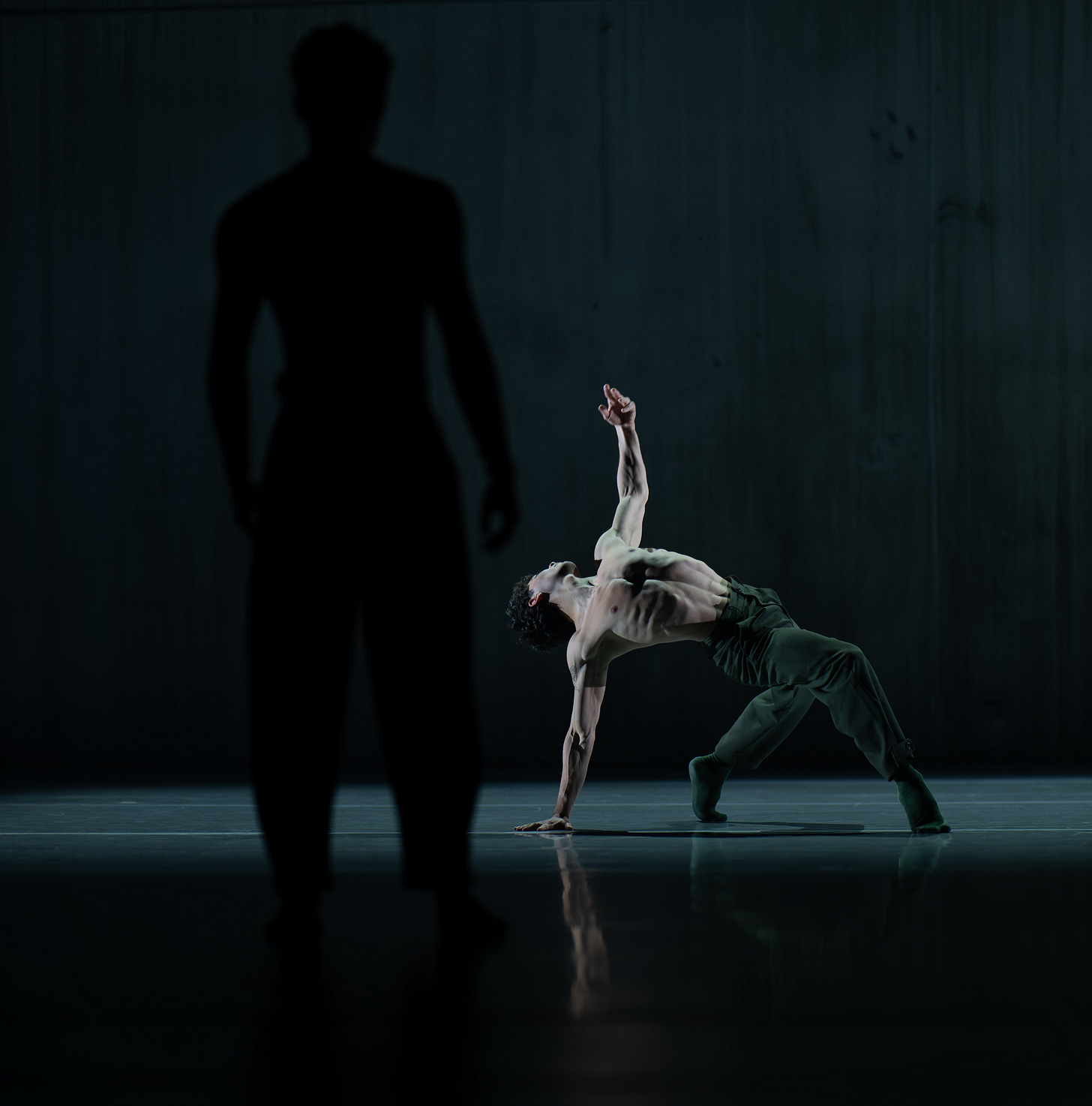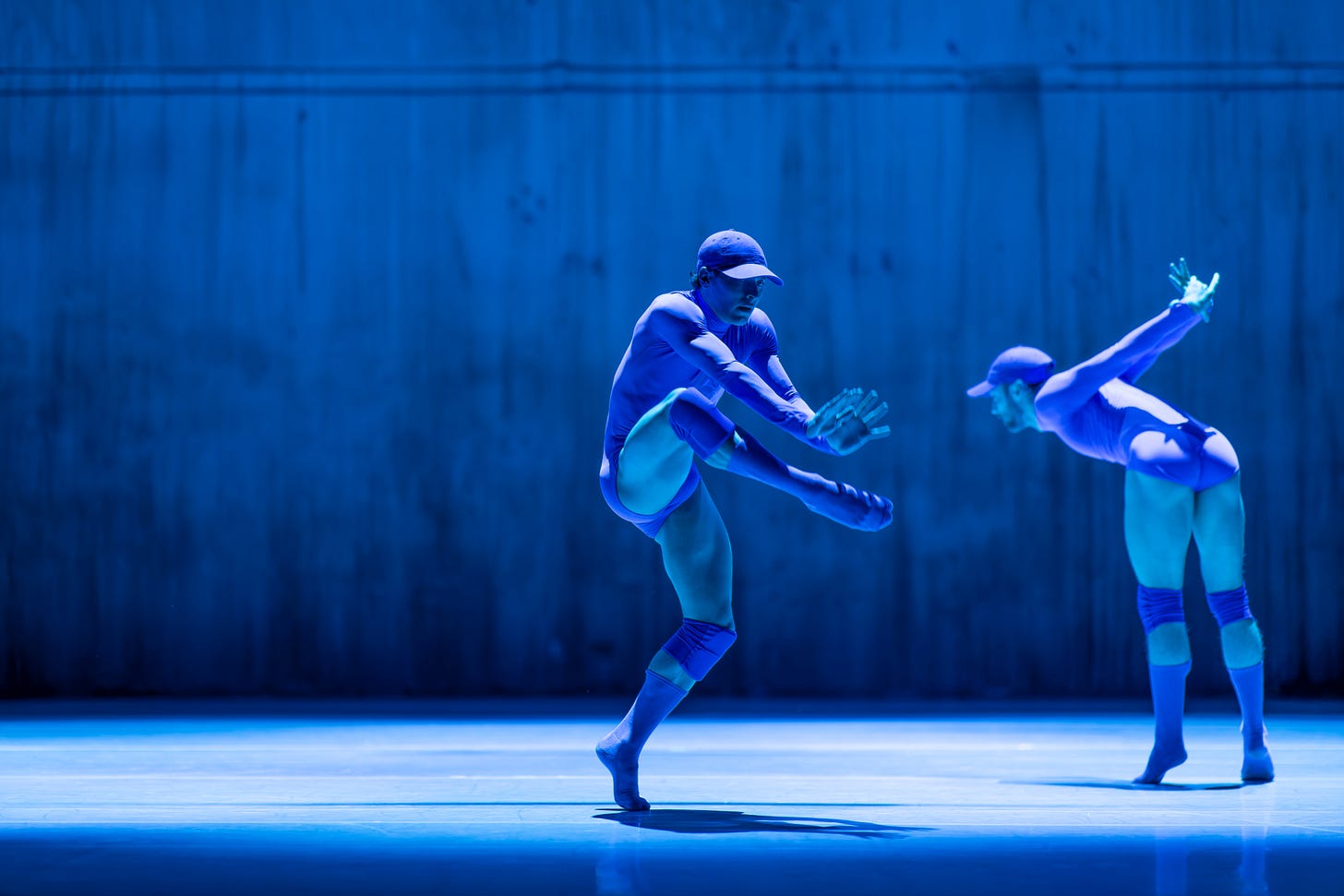
I feel like a broken record but I’ll say this anyways: One of my favorite things about Seattle contemporary dance company Whim W’Him is the breadth of choreographers it’s presented over its 16 seasons.
Founded by current artistic director Olivier Wevers, Whim W’Him has been and continues to be a platform for its extraordinary dancers and for an array of dance-makers from around the world, including Belgium native Wevers, who came to Seattle 28 years ago, in 1997, to dance with Pacific Northwest Ballet.
Wevers’ ballet background, and the extensive ballet training of his seven company members, figures into Whim W’Him’s repertoire, but Wevers believes dance needs to move beyond its classical ballet roots to speak to new generations, and to survive in our digital world. That diversity was evident in the three pieces on the Spring ’25 bill that opened May 9 at the Cornish Playhouse at Seattle Center.
Wevers embraces new technology but he remains a fervent believer in the value of live performance. In a preshow welcome speech, Wevers emphasized the value of community members coming together to see a performance. Wevers asked the audience to try to set aside the recent economic hits the arts community has had to endure from the White House and its “Make America Great Again” supporters. “We are not victims,” Wevers said. “The arts are born from the soul.”
Whim W’Him has made it a practice to premier nine new works each artistic season, presenting three dances in each of its three performances. Its most recent trio featured two creations that brought the audience to its feet. The third, which addressed gender identity and the male relationship to team sports, a work called CHAMP, choreographed by Mark Caserta, was more controversial than crowd pleasing, but it inspired a conversation amongst the strangers sitting around me, an artistic success in my book.

The evening opens with Wevers’ Rituals for the Mother, which begins with a spotlight on dancer Jacob Beasley, who is sitting downstage in a pool of bright light, tapping out a rhythm on a small handheld drum. The other company members, dressed in subdued green, are undulating in a line upstage. Beasley was featured in all three of the dances on the bill, usually partnered with fellow dancer Owen Fulton, new to Whim W’Him this season, along with four women who joined the company last fall. Wevers’ Rituals is dark and lyrical, although Beasley and Fulton flirt with a violent pas de deux in the second section of the piece. But Wevers’ dances aren’t about confrontation as much as they’re about our relationships with our fellow humans, and the audience responded to it with enthusiasm.

Where Wevers’ dance was lyrical, Caserta’s CHAMP is harsh, with a percussive sound scape featuring squeaking sneakers on a gym floor, and the ambient noises of athletes and observers punctuated the squeaks. The seven dancers wear blue leotards, knee pads and ball caps; they are members of a team, and the program tells us this piece attempts to highlight “toxic masculinity.” My seat mate and I discussed that, but wondered if what seemed to be a sex act that morphed into what appeared to be a strangulation went a step too far. Whatever the ultimate aim, Caserta definitely provoked conversation with his carefully plotted choreography.

Idaho resident Lauren Edson’s My Strange Darling ended the show. It, too, featured Beasley, in a striking purple suit, in partnership with a metallic puppet that was put in motion first by Fulton, then by dancer Ashley Rivette. Edson’s program notes say she’s addressing the impact of technology in contemporary society. I saw that, but I was more interested to watch how the initially black clad dancers transform from puppet partners to puppet masters. Fulton’s shadowy role as the manipulator of the metallic puppet evolves into a dancer who pulls Beasley’s strings, manipulating him the way he had controlled the metallic puppet. Are the machines taking over?

My Strange Darling is a choreographic conversation about partnerships, with what felt like an unnecessarily violent resolution. But my interpretation might be too literal, and too personal. Beasley performs some lovely soft-shoe to 50’s era doo-wop, and is eventually joined by his fellow dancers. I don’t know enough about AI to comment with any authority on how technology and humans interact, but I do recognize that I’m not curious enough to engage with AI to discover how it will impact my own life. Lauren Edson succeeded in making me question that potential relationship.
Whim W’Him showcases Wevers’ own choreography, but from its inception, the company has commissioned other dance-makers from around the world, bringing people like Annabelle Lopez Ochoa, Penny Saunders, and my latest dance crush, Cameron Fraser-Monroe, to Seattle for the first time. For 16 seasons that’s been a boon to local dance lovers who get the opportunity to see beyond what Seattle artists are creating.
A friend and savvy dance observer told me she felt like we were watching a performance created during and influenced by Seattle’s dark months but presented in the middle of our glorious floral spring. I’m not sure when these three dances were choreographed, but I do know that, for me, they felt very current, reflecting some of the venal, retributive nature of the man in the White House and the era he and his henchmen have ushered in. Sorry Olivier, I wasn’t able to completely abandon the political miasma swirling around us, but Spring ’25 gave me a particular context in which to view it.
You have another weekend to see how it impacts you. Whim W’Him’s Spring ’25 program runs through May 17 at the Cornish Playhouse, and presents one performance Thursday, May 15 at 7:30 p.m. at the Vashon Center for the Arts on Vashon Island.




